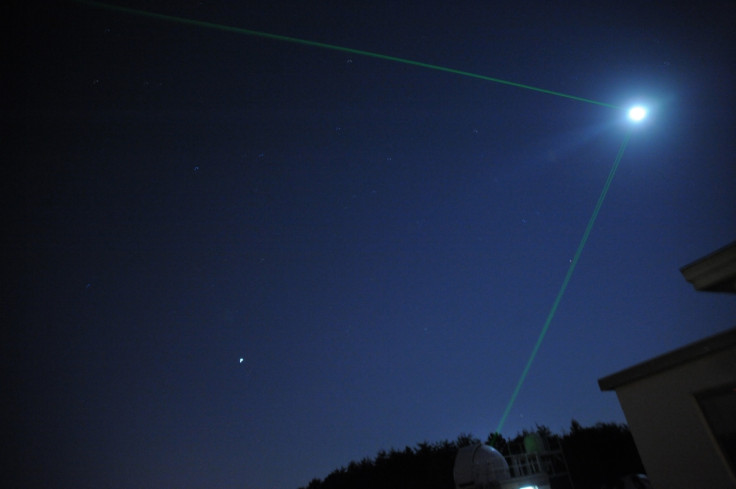Scientists stopped an electron in its tracks for the first time ever using a powerful laser beam
A laser beam, a million times brighter than the light on the surface of the sun, was shot at an electron to slow it down.

For the first time ever, scientists have stopped an electron in its tracks by using a highly powerful laser beam, a million times brighter than the light on the surface of the sun. The new experiment involved researchers successfully achieving a powerful and mysterious phenomenon called "radiation reaction" in the lab.
When light hits an object, some of it bounces back. However, if an intense beam of light hits an object that is moving incredibly fast, it can result in violently shaking up electrons, which in turn actually slows them down – this process is called radiation reaction.
Radiation reaction is believed to occur in some of the most extreme environments in the universe, such as around black holes and quasars, which are supermassive black holes surrounded by gas.
However, the new experiment successfully achieved radiation reaction in a lab. Scientists at the Imperial College London used the Gemini laser at the Science and Technology Facilities Council's Central Laser Facility to shoot a powerful laser beam at a high-energy beam of electrons.
"We knew we had been successful in colliding the two beams when we detected very bright high energy gamma-ray radiation," said Dr. Stuart Mangles from the Department of Physics at Imperial College London, the new study's senior author, Phys.org reported. "The real result then came when we compared this detection with the energy in the electron beam after the collision. We found that these successful collisions had a lower than expected electron energy, which is clear evidence of radiation reaction."
"One thing I always find so fascinating about this is that the electrons are stopped as effectively by this sheet of light, a fraction of a hair's breadth thick, as by something like a millimetre of lead. That is extraordinary," said the study's co-author Professor Alec Thomas, from Lancaster University.
The results of the experiment are also more aligned with a theoretical model which is based on the principles of quantum electrodynamics. The data also provide some of the first evidence of quantum models that have never been tested before.
"Testing our theoretical predictions is of central importance for us at Chalmers, especially in new regimes where there is much to learn," said the study's co-author Professor Mattias Marklund from Chalmers University of Technology in Sweden. "Paired with theory, these experiments are a foundation for high-intensity laser research in the quantum domain."
The findings of the new study have been published today in the journal Physical Review X.






















